The Dancing Lanterns by the Youths of Bukit Timah Seu Teck Sean Tong
Sugen Ramiah
Apart from satisfying the hunger of the wandering spirits and entertaining them with boisterous live stage performances of the Getai, the seventh lunar month is also meant for the living. Business owners, wet market and hawker center associates, during this period to pray for peace, smooth sailing and thriving ventures. The members of the Tanglin Halt Wet Market invited the Bukit Timah Seu Teck Sean Tong to conduct their annual seventh month rituals, which was held on the twenty ninth day of the seven lunar month (3rd of September 2013).
Akin to the Teochew rituals at Chui Huay Lim Club, an entire day was spent to fulfill the needs of the wandering spirits. As dusk drew near, the focus was diverted to the living; as they recited the guan yin sutras, asking for bountiful blessings upon the supplicants. One of the highlights of the evening was the “dance of the auspicious lanterns” or also known as ‘kee hock pau teng‘ in Teochew
These are the common red lanterns found suspended at entrance of the house, oval in shape and adorned with golden tassels. In reality, there is no underlying dogma to this presentation; however this is done to extend their (the temple) appreciation to the organizers who engaged them and to amuse them with a little folklore.

The common red lanterns which are oval in shape, adorned with golden tassels which can be found hanging at the entrance of a house (photo Sugen Ramiah)
The performance began with the dimming of the interior lights of the temporary altar, to create the perfect ambiance. The youths of the temple, draped in white robes with green sashes across their waist, then marched in with the new lanterns.
It was accompanied by a beautiful Teochew repertoire of strings and percussion. As the tempo gradually increased, the youths sprang into acrobatic actions with their lanterns creating rhythmical movements. Every single movement found expression in their faces. The radiating positive energies exuded by these young men were bound with the lanterns, thus transforming them into auspicious items.

This is the energy that burns in the passionate youths that makes the lanterns auspicious ( photo Sugen Ramiah)
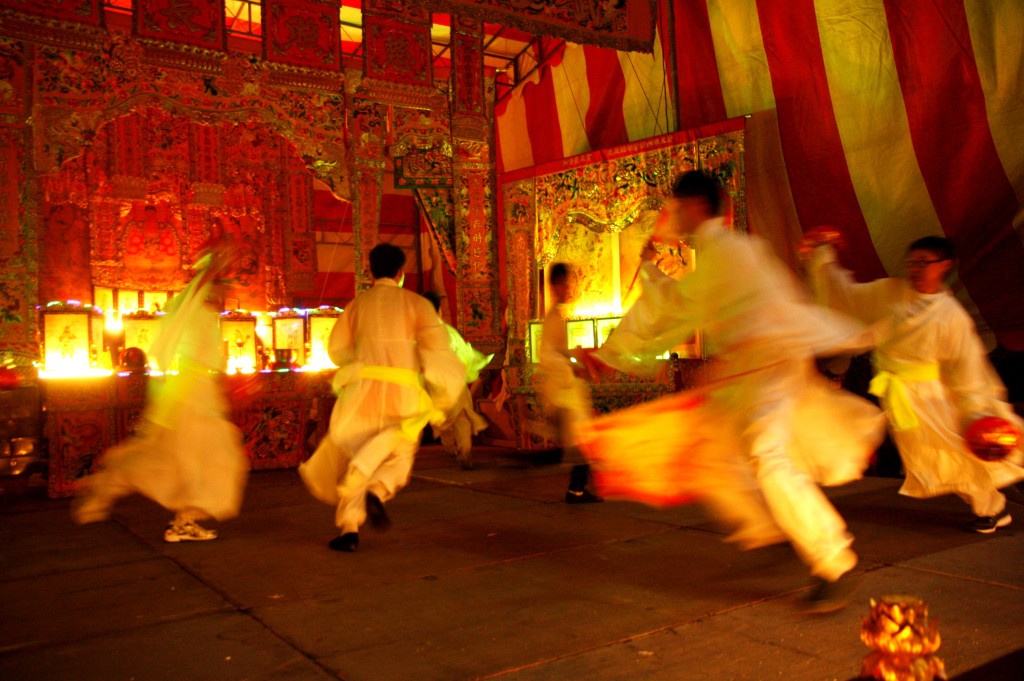
This is the energy that burns in the passionate youths that makes the lanterns auspicious (photo Sugen Ramiah)

The final pose struck at the end of every piece, Kelvin (front) Yishun (left) and Matthew (right) (photo Sugen Ramiah)
Flags of various colours were also carried in this ritualistic dance. These twelve pairs of auspicious lanterns and flags were then placed for bidding during the auction dinner the following day.
The ceremonial dance concluded with a roaring ‘huat ah’ by the youths as the organizers received and hung the lanterns on the bamboo poles. These lanterns purchased during the auction will be taken home and will be returned the following year.
Sugen Ramiah a teacher by training, has been observing and documenting Chinese festivals and rituals conducted by temples for the past one and half years.
More on the Hungry Ghost Month from Sugen here and here .
On a bright Sunday morning, a descendant of the family of Tan Kheam Hock spent 4 hours clearing one of his families’ clusters. Edmon Neoh-Khoo was assisted by Brownie Khoo Ee Hoon who both helped in the clearing and documented the effort. Edmon is also an avid gardener and will continue to look after the tombs of his extended family in Bukit Brown. We salute Edmon for fulfilling his filial duties in such an exemplary manner.
In Hill 2, clearing the way to the family cluster of Tan Kheam Hock.
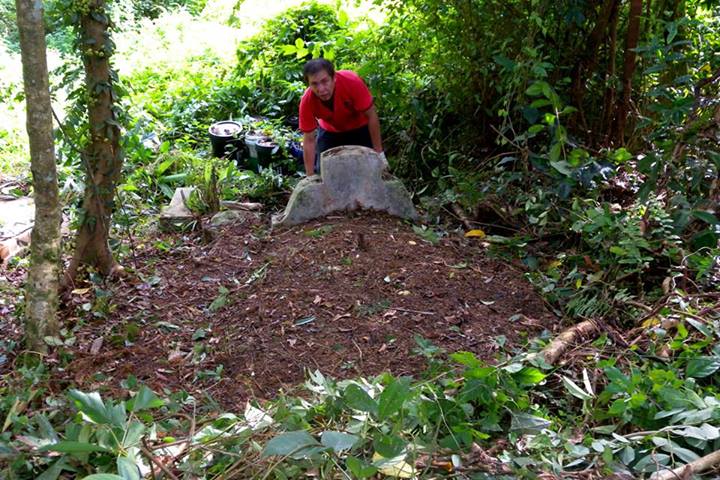
The tomb of Daisy Tan, granddaughter of TKH, She passed away at 2 months old, dob Oct 28- dod Dec 26. 1933 (photo Khoo Ee Hoon)
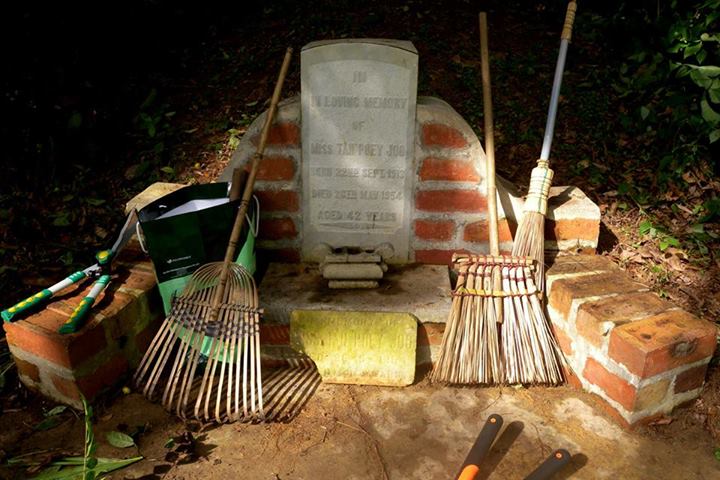
A tools of filial piety at the tomb of Tan Poey Joo, granddaughter of TK, dob Sept 22, 1933 – dod May 26, 1954(photo Khoo Ee Hoon)
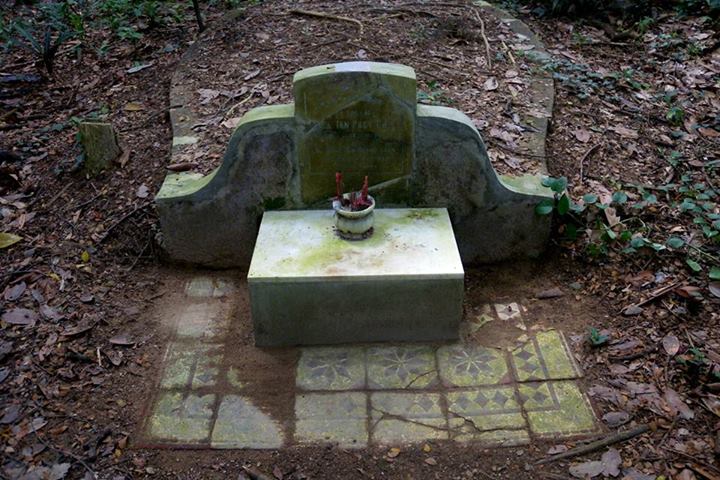
A special visit to Tan Poey Choo, granddaughter of TKH, to fulfill a brownie promise (photo Khoo Ee Hoon
There is an old Chinese saying:
“Remember the Source of the Water”
by Sugen Ramiah
The rituals (Part 1) by Xuan Jiang Dian (Tortoise Hill temple) had begun with the gathering of lost souls, followed by purification and the granting of salvation. Now what remained was the sendoff, the rites of passage for the souls to transcend into the final phase – reincarnation.
As the temple volunteers busied themselves with preparations, family members streamed in, with offerings of food, drinks and flowers – a final meal for the souls. The menu included local delights such as the ‘apom’ (coconut pancake) and ‘roti prata’ with curry.
Taoist priests draped in beautifully woven majestic vestments walked through the rows of tablets chanting the scriptures.This was followed by the tossing of offerings (which had been blessed) to the “yeow kui (literally hungry ghosts). Offerings such as sweets, flowers, fruits, joss papers, a whole chicken and even pieces of pork belly were thrown before a group of supplicants waiting to catch them.
With the altar table emptied, the celebrants then performed “mudras” – a series symbolic hand gestures which are believed to be imbued with energies.
As dusk approached, we were treated to an uncommon sight of the ‘Ku-Dong’. The ‘Ku-Dong’ is a pair of big headed dolls, identical to the common ‘Dua Tow’. The commonly seen ‘Dua Tow’ has a gleaming smile and often bounces jovially to the sound of the ‘gongguan’ (percussion troupe). The Ku-Dong however, expresses extreme grief with tears streaming down its rosy cheeks.
The Ku-Dong crawls on its knees and wails plaintively to the sorrowful tune of a folk song. In Chinese funeral customs, the mourners, especially the women kneel beside the coffin and lament. It is an expression of intense grief, respect and loyalty to the deceased.
But has anyone grieved over the innocent – victims of massacres, of infant mortality and those whose bodies were never claimed and ultimately not given a proper burial? These acts of remembrance, assures closure for the souls. Having heard expressions of grief for their death, they can now move on.
They are transported on the ‘Ship of Compassion’ that saves sentient beings and ferries the souls to its final repose. An effigy of the Ship was positioned at the entrance of the tentage. Family members were invited to bring their ancestral tablets and place them neatly in the lower deck. Those tablets without family members, like the tablet dedicated to the souls of Bukit Brown, were reverently carried by the volunteers of the temple. Once the decks were filled and all “guests” were on board, the ‘Ship of Compassion’ was ready to set sail.
By this time the procession to accompany the souls had already lined up and the fifteen foot effigy of ‘Da Shi Ye’ (King of Ghosts) was carried together with the ‘Ship of Compassion’. The sending off procession led by the gongguan , took a longer route as the ‘Da Shi Ye’, wanted to ‘inspect’ the neighborhood.
Five fully loaded chartered buses arrived at East Coast Beach. The ‘Ship of Compassion’ was then carried to the shore, and piled with paper silver and gold. Two lanterns and bundles of joss sticks were placed and finally lit. As the flames illuminated the darkness, thoughts of impermanence clouded my mind.
The three day intensive event drew to a close when we returned to Bukit Merah to send off the King of Ghosts. Paper treasure chests, prepared as departing gifts were place in an orderly manner inside an enormous cage for burning. The effigy was finally placed in the center, and ignited.
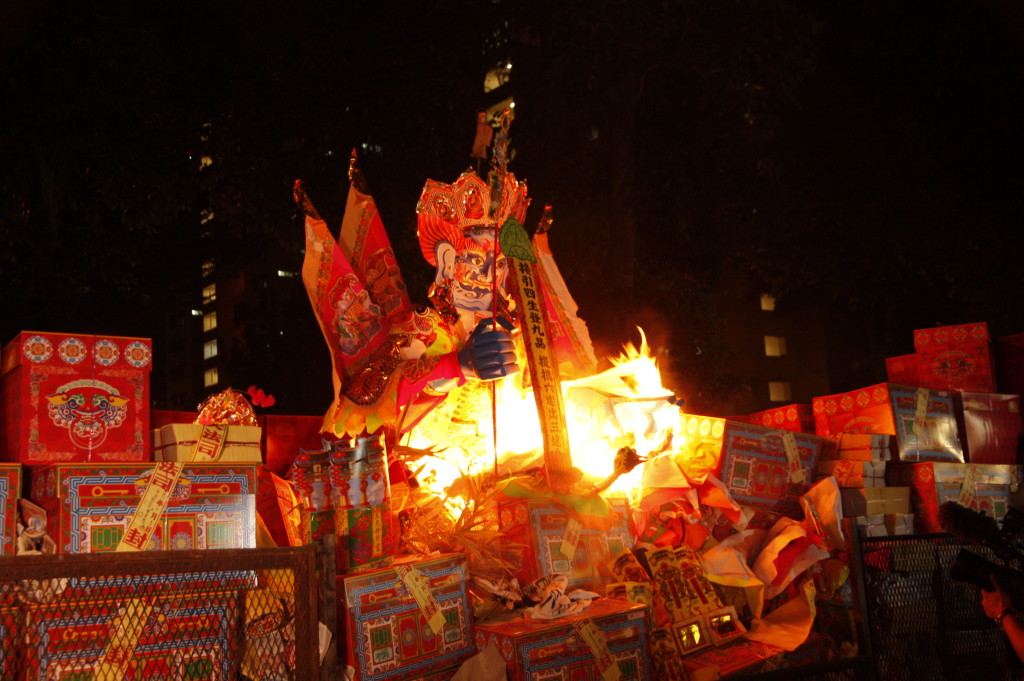
The King of Ghosts and the treasure chest paper offerings – brings to a close the salvation for lost souls with Xuan Jiang Dian (photo Sugen Ramiah)
For me, it has been a rewarding experience, to understand the concept of salvation in an afterlife. As paper burned into ashes and darkness turned to light, I prayed that the lost souls had now found, peace.
Sugen Ramiah a teacher by training, has been observing and documenting Chinese festivals and rituals conducted by temples for the past one and half years.
Bukit Brown. More than a cemetery. More than a Chinese cemetery.
Come discover our heritage, history and habitat.
Join Fabian as he tells you stories of the pioneers, from the personal to the political, and unravels the stories of the delicate and exquisitely carved panels inspired by Chinese culture and tradition.
LTA has released news on exhumation and tender for road building. Take this opportunity to experience Bukit Brown Chinese Cemetery as it is now.
Day: Sunday 25 August 2013
Time: 9:00 am. to 11:30 a.m.
By agreeing to take this walking tour of Bukit brown cemetery I understand and accept that I must be physically fit and able to do so. To the extent permissible by law, I agree to assume any and all risk of injury or bodily harm to myself and persons in my care (including child or ward)
Registration: Our weekend public tours are FREE …
Optimally the group size is 30 participants (15 individuals/guide).
Please click ‘Join’ on the FB event page to let us know you are coming, how many pax are turning up. Or just meet us at the starting point at 9am.
Meeting Point: Bukit Brown Under the Rain tree at the roundabout.
by Sugen Ramiah
It was the ninth day of the seventh lunar month, and I have been busy documenting rituals and customary practices of the Hungry Ghost Festival. Every temple or ‘sintua’ (a group of devotees with no temple and who gather in a place which host the deity statues and censers) has its own designated date, to perform cleansing rituals for the wandering souls. Released into the human realm, these are souls who have no one to remember them and assuage their suffering by making them offerings. This year I was fortunate to have been invited by the members of ‘Xuan Jiang Dian’ (Tortoise Hill) temple, to observe their seventh month memorial service.
Due to lack of space at the temple’s premises, a temporary tentage was set up in an open car park located in Bukit Merah View. Preparatory rituals had begun earlier that day, performed by visiting priests from China. These rituals were to cleanse and protect the holding ground from negative elements.
Members of the temple and fellow Brownies(the volunteers at Bukit Brown) gathered in the late afternoon and were greeted by the thunderous sounds of the temple’s newly formed gongguan (percussion) troupe.
We left the premises just before 7pm to gather lost souls from two different locations. The first was at the East Coast Park beach, followed by Bukit Brown cemetery. When we reached our first destination, a temporary altar was set up and chanting accompanied by the sounds of cymbals and drums began.
The Chinese believe that once a soul departs from its mortal body, it loses its direction. Lanterns help to light the way for the soul. Since they were going to call on many souls, a two metre long paper inscription fixed to an extended bamboo branch was used; It was to ensure maximum visibility for the souls. As the priests sang, the branch was flagged rhythmically according to the melody. Once the lanterns returned to ashore, offerings of paper money were burnt and the gongguan troupe received the wandering guests with their music.
The altar was then dismantled and we proceeded to our next destination, the Bukit Brown Cemetery. As the convoy led by the gongguan transported on a brightly decorated truck, turned into the Sime Road, the gleaming LED lights of the truck, glowed in the poorly lit road. The deafening clangs and gongs must have awakened the neighbouring residents including the residents of Bukit Brown. As the truck drove past the cemetery gates, the buses stopped at the T-junction of Sime and Kheam Hock Roads with Jalan Halwa. A few of us alighted and ran through the cemetery gates with heightened anticipation.
As we entered, the vision of a trail of lighted candles against the backdrop of the night sky, took our breathe away.
The temporary altar was once more erected, but this time they placed a special tablet dedicated to the lost souls of Bukit Brown. As the priests chanted and called upon the countless souls, I was moved by their rituals. Unlike the powers that be who have abandoned them, I was glad there were still Samaritans who remembered them.
These are the souls of ancestors who have been long forgotten, infants and the unsung heroes who died tragically during the war. To give them temporary lodging, meals to feed their hunger and prayers to purify their weary souls, is by far the greatest act of kindness and filial piety.
As the priests circled the roundabout, there was a sense of closure in the air, as though the souls have found the light. To conclude the rituals, paper money was burnt as an offering and the gongguan troupe signaled the close of the ceremony at Bukit Brown.
It was time to return to Bukit Merah for the concluding rites. We alighted along the main road, about five hundred metres away from the holding ground and lined up for a procession. The gongguan troupe on the glittering LED flower truck led the way. Following immediately behind, the tablet dedicated to the wandering souls, the lanterns carried by devotees and participants holding joss sticks. This drew the attention of the residents in the neighbourhood and the people eating at the hawker centre.
As we marched triumphantly down the street with our “guests”, we felt that we had accomplished something meaningful: We had found and acknowledged in our hearts, the forgotten souls of Bukit Brown.
Sugen Ramiah a teacher by training, has been observing and documenting Chinese festivals and rituals conducted by temples for the past one and half years.
It was Singapore’s 48th National Day and Bukit Brown’s 91st year. We sang the national anthem and recited the pledge with gusto and with pride. But when it came to observing a minute’s silence to honour the pioneers who are buried in Bukit Brown, there was a palpable sense of sadness. We remembered especially those whose graves are to be exhumed to make way for the highway..
James Tann captured this poignant moment as some 80 participants from the guided walks , stood shoulder to shoulder with the Brownies
And the celebrations continued with cake, supper and music in the air.
And there was music
Earlier, the participants had fanned out over all 5 hills on a 2 hour walk, as the Brownies shared stories from beyond the graves, of the trials and tribulations of the early pioneers. The Brownies who led the guided walks for NDP2013 :Many Stories, One Singapore@Bukit Brown were, Yik Han, Fabian, Catherine, Peter, Mil, Bianca and Claire.

The group which covered Hills 1 and 3 led by Brownie Mil Phuah took their group photo at her grandfather’s tomb cluster (Photo Mil Phuah)
One of the first groups to arrive were the heroes who completed the full walk starting from Kranji, through the rail corridor and ended at Bukit Brown for the guided walks. — at The National Day walk for a Greener Singapore: Former Rail Corridor-Central Catchment Area-Bukit Brown Cemetery.
As Claire led a guided walk over hills 5 and 2, . A.J. Leow, a participant reflected :
Somebody has to tell the next and this generation — Who came before us….We need more storytellers to tell our history
“Why 星汌 — when they first arrive (by sea), they see the shimmering lights — and they know it’s where the stars beckon. They have arrived in Singapore. 星汌 is our version of the Statue of Liberty, 星 加坡 seems a better choice than 新加坡. Think of 星汌 the lights of the shimmering harbor lights (stars) as they see Singapore for the first time” A.J. Leow
Darren Koh was moved to pen a tribute to the Brownies.
“On behalf of the how many thousands who have heard the many stories, the many histories, the many tales from the Brownies: I thank you. I thank you all for showing us a part of the warp and weft of history hidden to many of us. I thank you all for the passion that all of you have put, all that you have contributed whether by way of knowledge and research, by bush-bashing and discovery, by organisation and dissemination of information, by just being a friendly face that says hello, or just being there.
Were it not for the rise of the Brownies, the Tomb Whisperer and his brother alone would never have been able to reach out to so many.
It is said, “Cometh the hour, cometh the man.” In this instance, it was two women, and then many more – men and women who have joined in: one has gone ahead to her rest, but many still come.
All you Brownies – you earned that title. For your ceaseless search of tombs, for your ceaseless dissemination of the stories found. For the many tours you have led. For those moments when you look at greenery and cry a little wondering how, how could it be torn up – and then look into the eyes of those listening to your words about the pioneers and say “Let’s go to the next tomb..” Thank you”
From Theresa Teng: “What could be more meaningful than spending Singapore’s National Day in a place where pioneers of Singapore lay rested. A minute of silent was observed to commemorate the 4000+ tombs that will be sacrificed for a new highway, that will be build to cut right through Bukit Brown cemeteries.I’ve never been more proud of my adopted country than at this moment. Everyone united to stand for a cause. Mind you, there are plenty of foreigners in the group who cared so much about the heritage of Bukit Brown too.Hopefully, it’s still not too late for a miracle to happen. Just maybe…….”
From All Things Bukit Brown, in gratitude : Without the support and encouragement of the Heritage Singapore – Bukit Brown Community we would not have traveled so far. Thank you for walking shoulder to shoulder with us.
And last but not least, we end with a moving tribute to the 4,513 graves that will be exhumed at Bukit Brown. Matt Tan, penned the words in the Peranakan style of the pantun. Claire Leow translated with poetic license.
- “When stories are lost, the narrative is broken” (photo Victor Yue)
4,153 tempat tido akan di korek
ape yaukin di bikin
kehilangan cherita tak boleh di gantikan
4,153 in repose to be deposed
Why the urgency ?
When the stories are lost, the narrative is broken
Every year on the 1st day of the 7th month lunar calender, the Chinese believe the gates of hell are opened, and the spirits are released to the earthly realm. Liew Kai Khiun shares his reflections of the rituals conducted at Bukit Brown Cemetery for the wandering souls.
Remembering the Forgotten and Forsaken
I had the opportunity to participate in one of the rituals for the lunar 7th Month festival at Bukit Brown Cemetery. Known as the “Hungry Ghost Festival”, this is a time where souls are released from hell for a month to roam the human realm. Although considered an inauspicious month where no weddings and property transactions takes place, it is actually a time for the living to remember the forgotten dead. Even the practice can be seen to be feudal, it is actually a spiritual extension of acts of charity to the wandering and homeless souls.
Long before it was known to the larger public, devotees from temples have quietly organized rituals to commemorate the nameless souls from the pauper graves of Bukit Brown Cemetery. While I have participated in Chinese folk religious rituals since I was a kid (particularly during military service), being self-taught in Karl Marx, I am not a very religious person. But, since the finalization of plans to run a mega expressway through Bukit Brown Cemetery by the end of the year, I felt the need to apologize and beg for forgiveness for not doing enough to stop this soulless project of the living from penetrating into this soulful place of the dead.
The night with this particularly group of devotees and the priest has been my most soulful and spiritual experience in Bukit Brown Cemetery. As the priest blessed my car before I exit the premise in the wee hours of the morning, I have never felt so tranquil and at ease driving home. Although these activities are done away from the public limelight, I feel the need to pen my thoughts here to clear common misconceptions and prejudices of such practices.
I am also truly humbled by their continued efforts without any intention of public recognition whatsoever. For those who have been forgotten and forsaken in life, it is rituals and activities like such that we try to remember them in their after-life.
It is not the road, but the rich cultural and ecological diversity that gives Singapore a soul.
Co-existence of Culture and Nature: This is a wonderful moment where smoke from the incense emerges amidst the hanging roots and leaves
Footnote: Unlike in HDB estates, these devotees do clean up and pack up after the rituals end
For more from Kai Khiun’s album, please click here
Since the news of the redevelopment of Bidadari Cemetery in the late 1990s, Kai Khiun has been involved in advocacy of Singapore’s built and natural heritage. As an academic, he has also been involved in the research and documentation of socio-cultural and historical issues in East and Southeast Asia, and has published some works recently on the use of the social media by conservationists in Singapore.
We would like to say a big THANK YOU to the My Singapore Destination meet up group for their contributions to clear tombs at Bukit Brown.
Because of your help, a tree which had fallen over the tomb of pioneer Cheang Hong Lim has been removed with the help of tomb keeper Soh Ah Beng.
The clearing of the tomb also paved the way for access to the tomb behind, belonging to Tan Kim Ching.
Clearing was made tougher because of a beehive on the tree.
by Jason Kuo ( 郭子澄)
A unique feature of some of the graves in Bukit Brown is the inclusion of the “Emperors’ Regnal Years or Eras” inscribed on the tombstones. Just as the British refer to the Victorian or Edwardian eras and America, the antebellum years, the regnal years speak to the milieu of the times under each emperor’s rule.
The regnal years are also sometimes combined with the Chinese zodiac year (天干地支), which is a 60- year cycle with each year represented by one of 12 animals (十二生肖), and each animal appearing five times in the cycle to form 60 years.
The inscription on this tomb in the Greater Bukit Brown area is of the 34th year of the Emperor Guangxu (光绪)and the zodiac year of the monkey. Guangxu’s first year of rule began in 1875, so his 34th year would be 1908 of the Gregorian year which was the year of the monkey. The deceased died in 1908, also the year Guangxu died.
With the exception of a long-reigning emperor, such as Qianlong (乾隆), any zodiac year most likely falls only once during each emperor’s reign in the last 150 years of the Qing Dynasty (清朝). For example, the year jiawu (甲午) – the year of the horse – only fell once during the reign of Guangxu. Thus the Jiawu of the Guangxu reign (“光緒甲午年”) is roughly 1894 of the Western era. This was the year of the First Sino-Japanese War, when Taiwan was ceded to Japan.
Four years later in 1898, Emperor Guangxu launched his abortive reform programme. Known as the 100-days reform (百日维新), its failure led to the execution of martyrs, the house arrest of the emperor (and continued rule by the Empress Dowager Cixi 西太后慈禧), and increasing radicalization of Chinese intellectuals. Emperor Gyangxu’s reign, was marked by defeat at the hands of the Japanese, and failure to push through reforms aimed at improving the lives of the Chinese.
Xinhai (辛亥)– the year of the pig – in 1911 was the year of the Wuchang Uprising (武昌起义) that eventually toppled the Qing dynasty. With the demise of the Qing dynasty, the “reign” title becomes Minguo 民国(民國), the republic.
This tomb shows the Mingguo year 32 on the left shoulder. Add on 11 and the year of death is 1943 in the Gregorian calendar, when Singapore was under Japanese occupation. The tomb is also inscribed with the Japanese Imperial calendar year of 2603 on the right shoulder. The Imperial year 1 (Kōki 1, 皇纪) was the year when the legendary Emperor Jimmu (神武天皇) founded Japan in 660 BC, according to the Gregorian calendar. By subtracting 660 from the Japanese imperial calendar year of 2603, we arrive at the equivalent Gregorian year of 1943.The tomb belongs to Dolly Tan whose name is inscribed in Japanese as : “Do-Ri-Tan,” to the the right of the Chinese name.
Taiwan still uses the Minguo “reign” year calendar, alongside the Gregorian calendar. This year, 2013, is Minguo 102.
About Jason Kuo (郭子澄): Born in Taiwan to mainland Chinese parents, Jason came to Singapore when he was six. Educated in Nanyang and Chinese High, he was drawn to Chinese history in particular, because as a child of of refugees, he wanted to understand his roots. He says growing up in Singapore was a wonderful experience as he was exposed to a great variety of languages and cultures. Jason, now works and lives in Hong Kong.
Further observations by the writer on the inscriptions on Dolly Tan’s tomb:
The modern Japanese dating system is identical to the Chinese imperial system. Each emperor’s reign is marked by a reign title. The current emperor’s reign title is Heisei 平成, beginning in 1989. The prior emperor ascended the throne in 1925, and was one of the longest serving monarchs in history. The Showa 昭和 reign began in 1925, and covered the years when Singapore was brutally ruled as Shonan-To 昭南島 [i.e., the southern island of Showa]. As the old emperor entered his 60th year of reign, the Japanese government was still putting out budget proposals that extended to Showa 100 or beyond, since an emperor’s mortality should never be questioned. I’m also intrigued that the tomb uses the lunar dating system even though the year is already Minguo [Minguo 32. 5th day of 4th moon], but in the Japanese rendition it kept the Gregorian system [Imperial year 2603, June 28]
We know there once lived a man named Chua Guan Eng, who died on the 24th April, 1940 aged 40. And that is all we would have known if not for the loving tribute of the inscription on his tomb.
And today, we know Chua Guan Eng’s tomb is staked (912) and will have to make way for the highway.
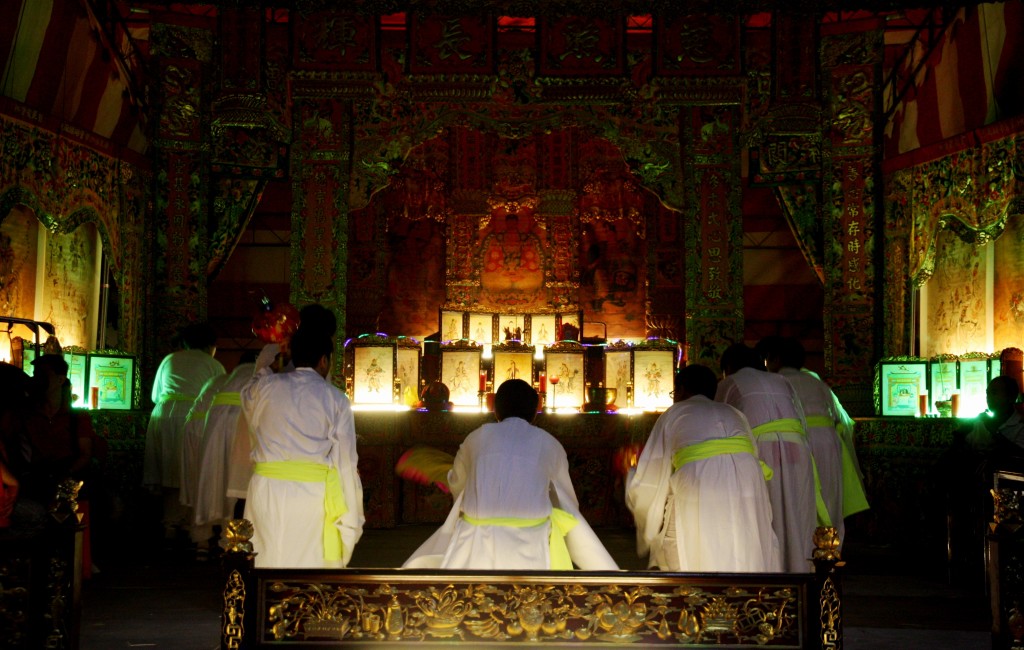
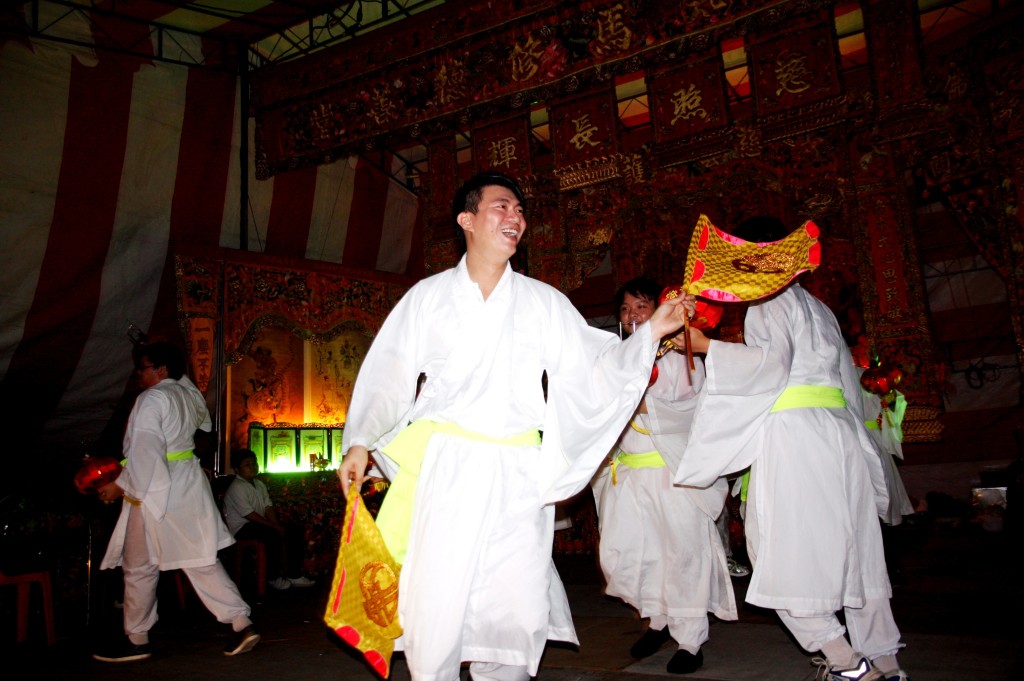

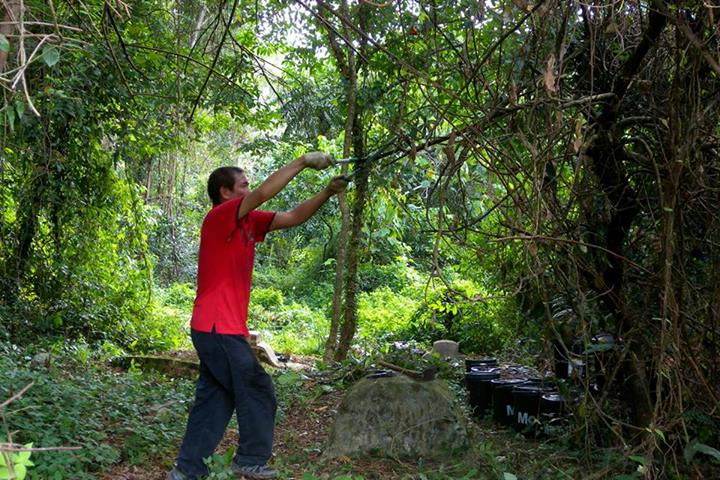




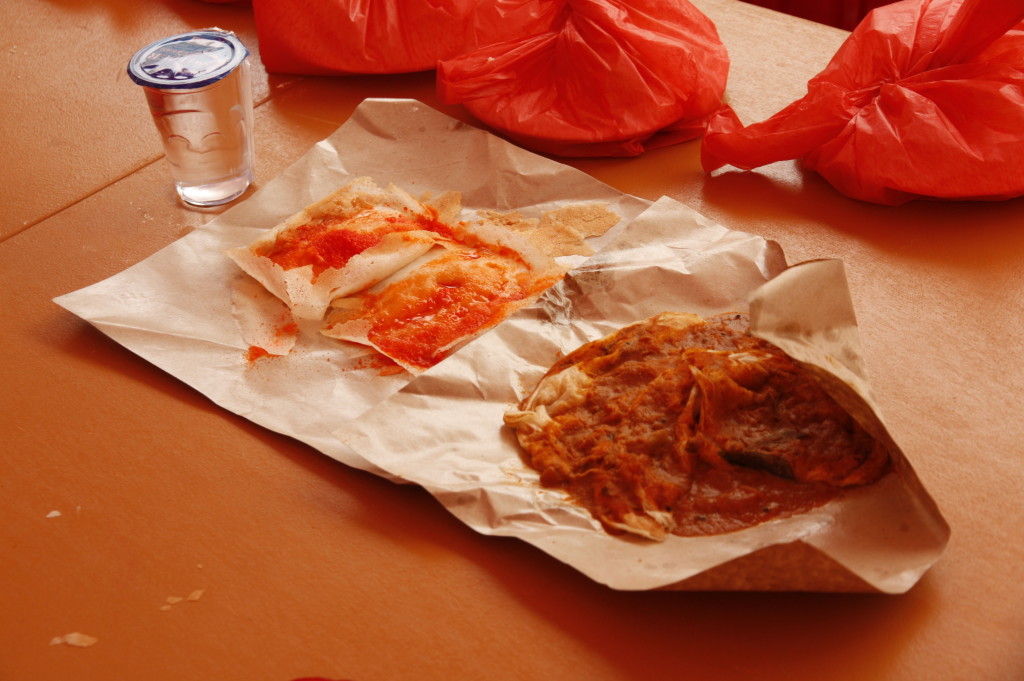
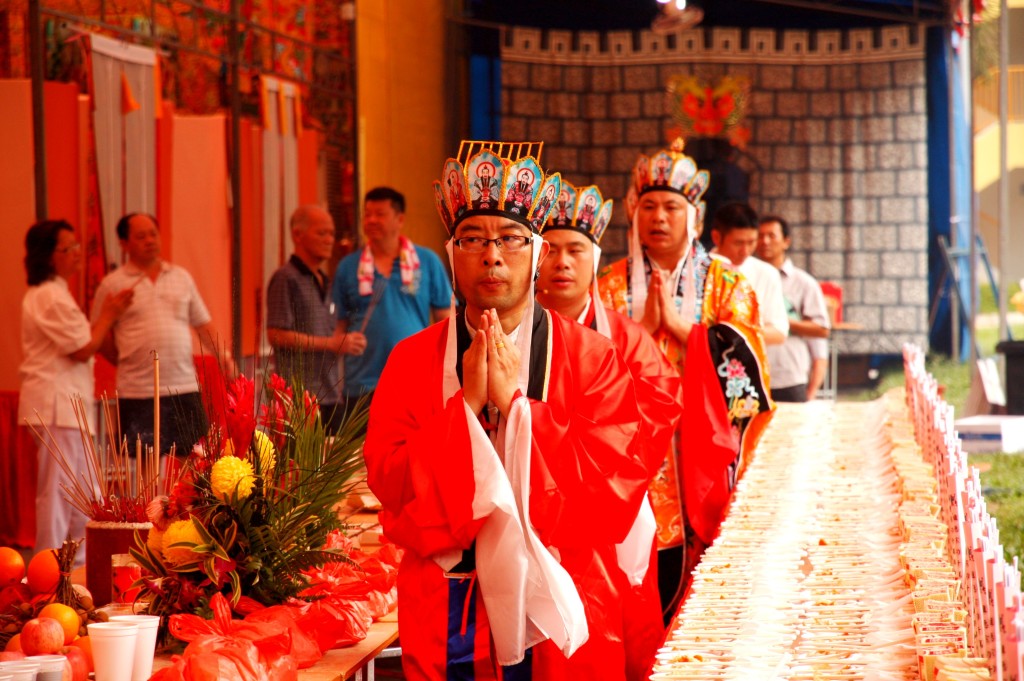
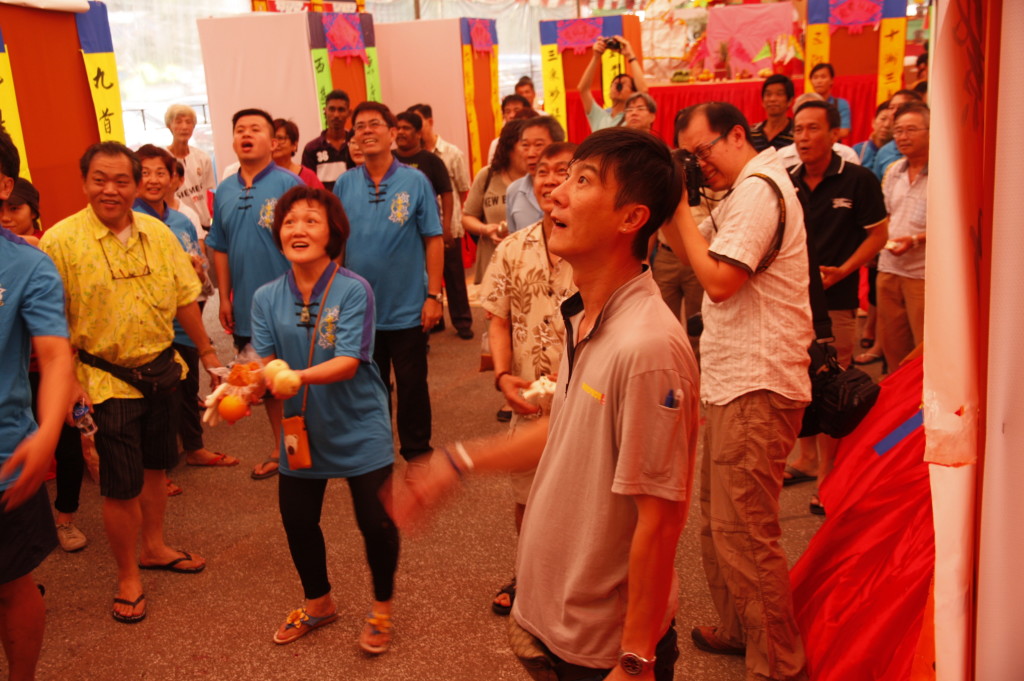



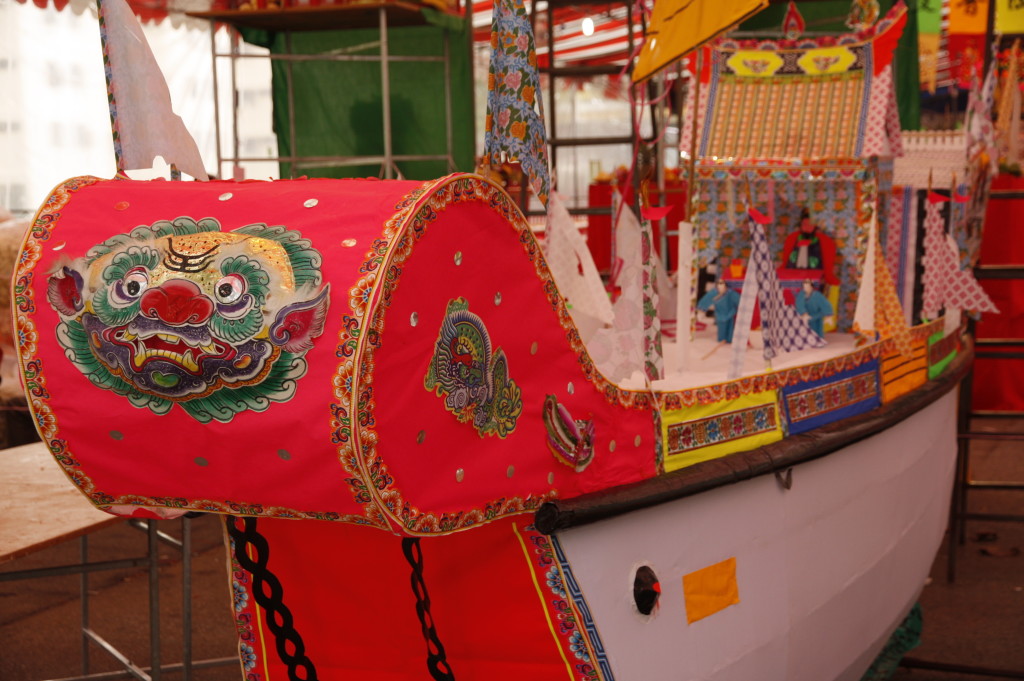
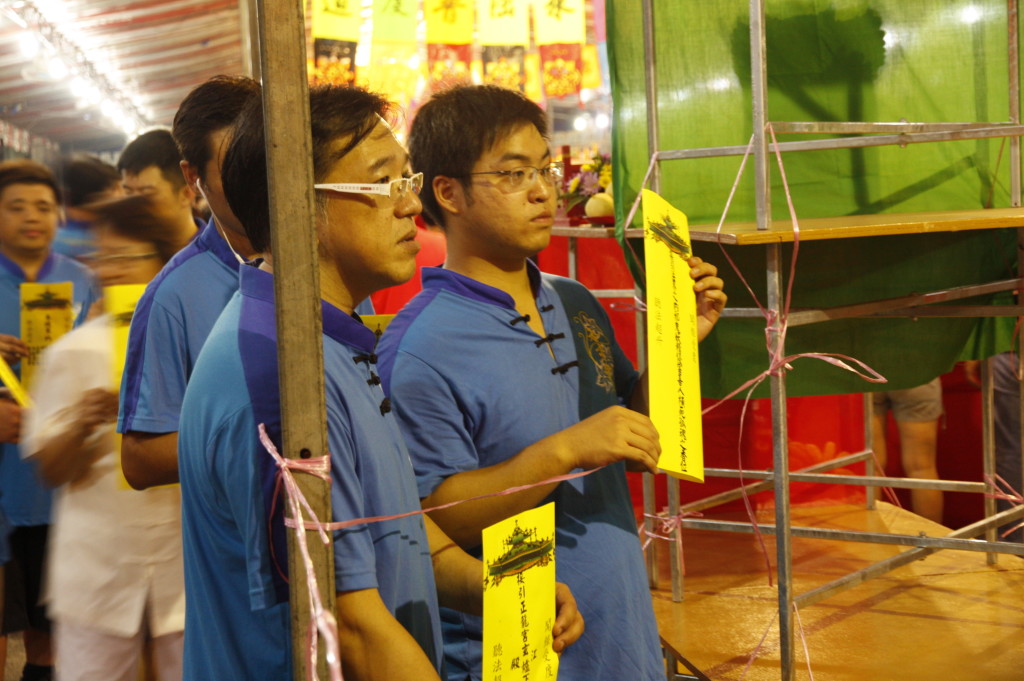
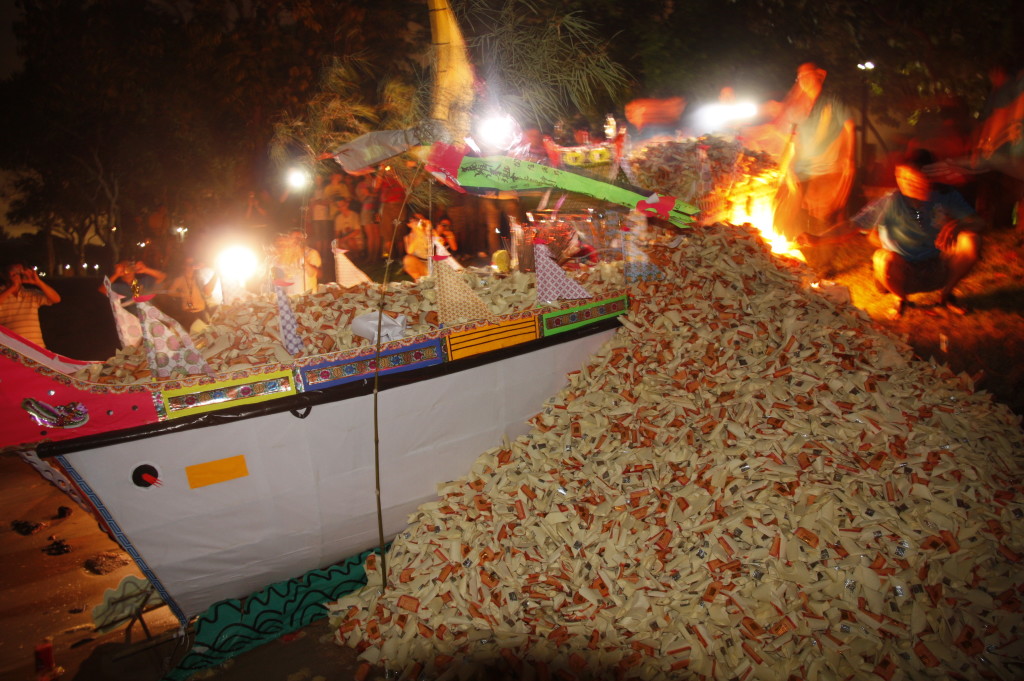
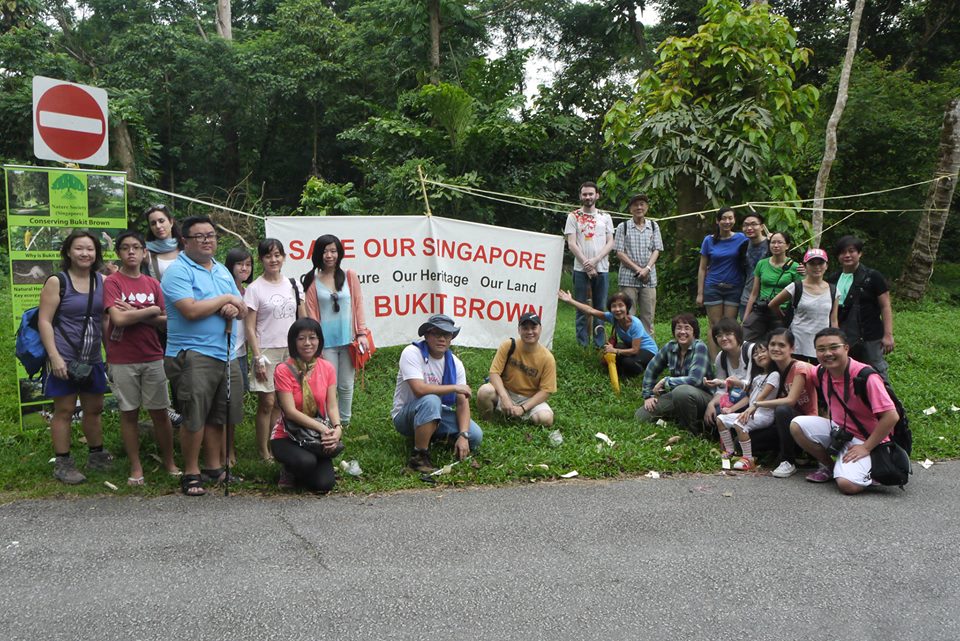


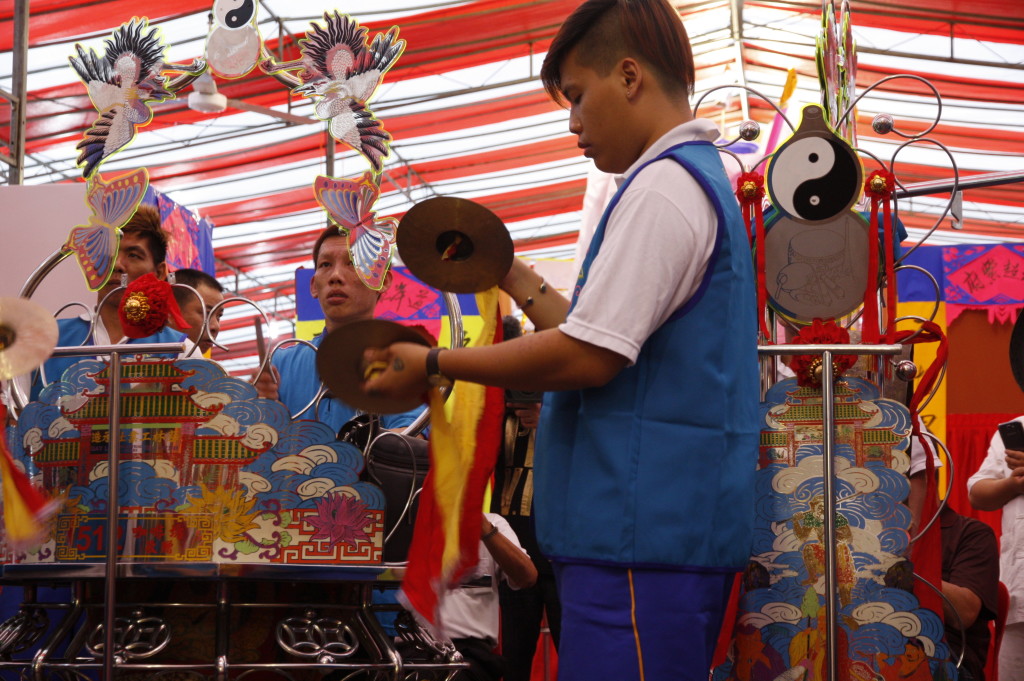
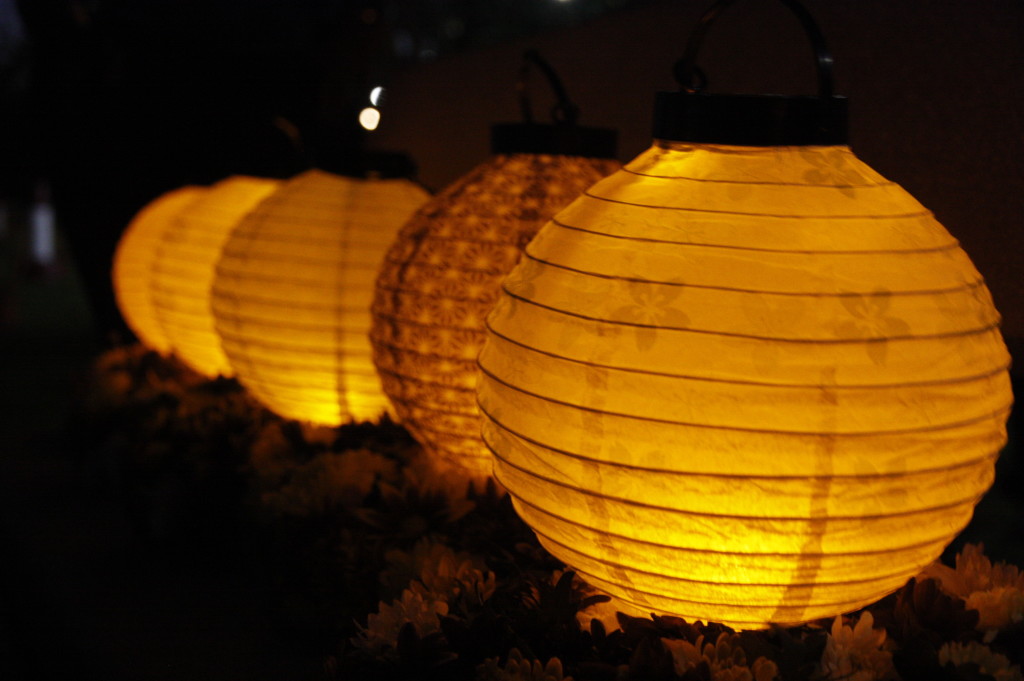
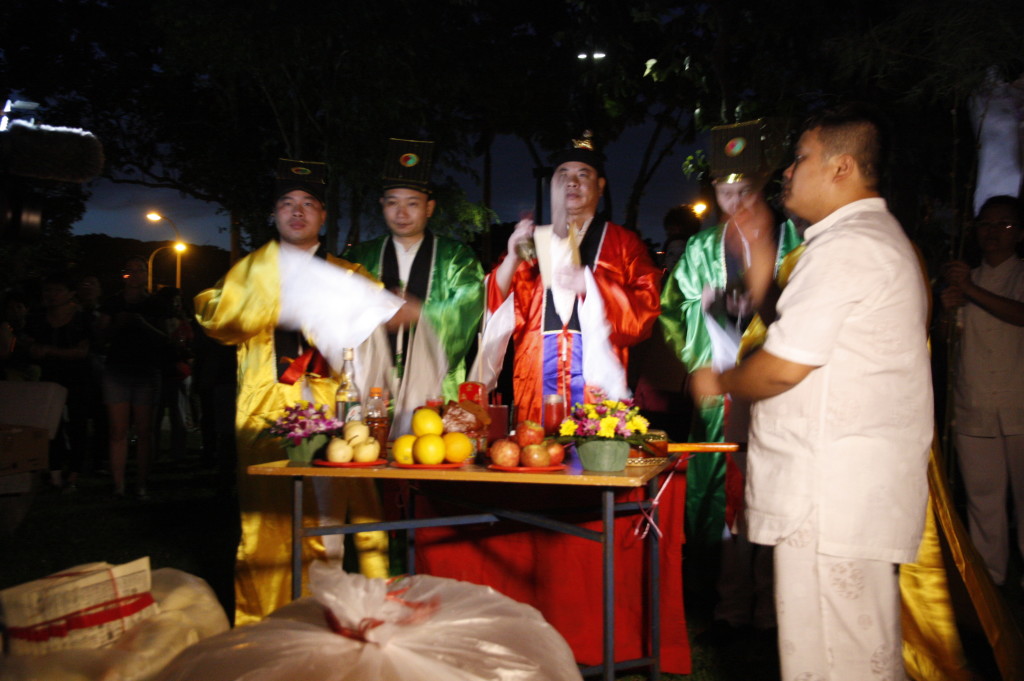
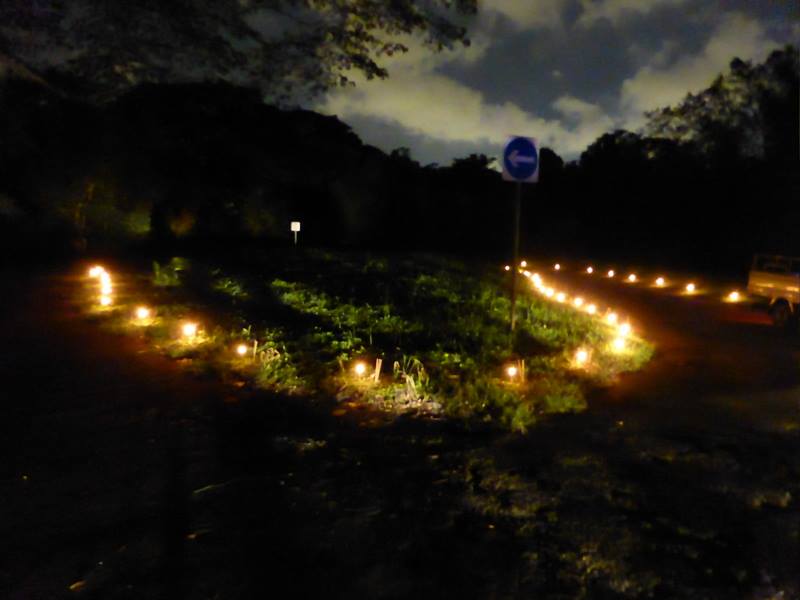

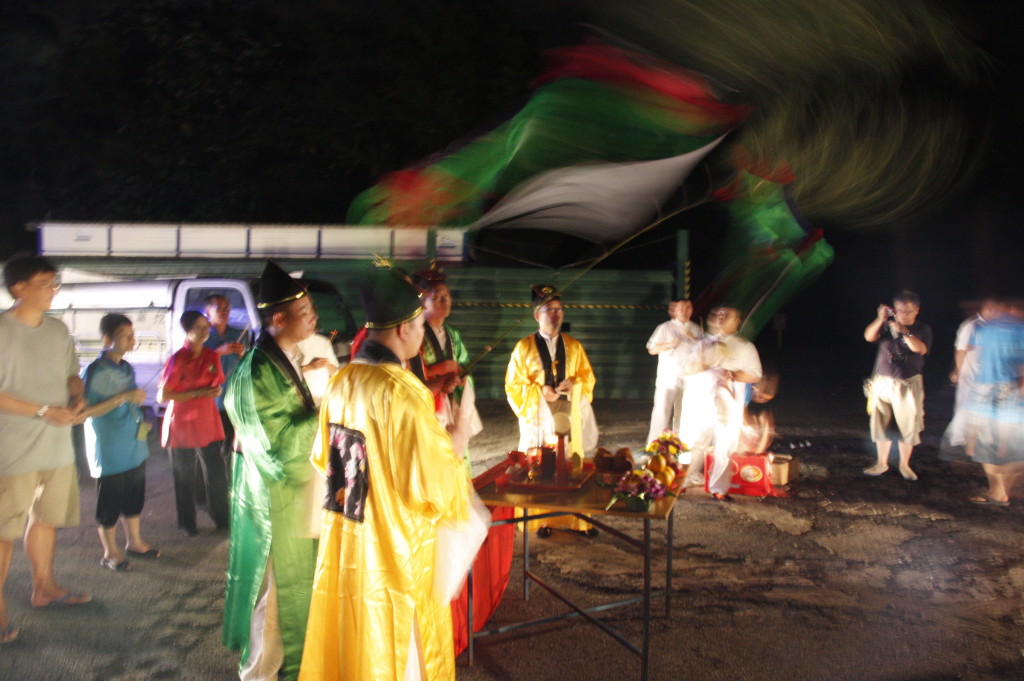
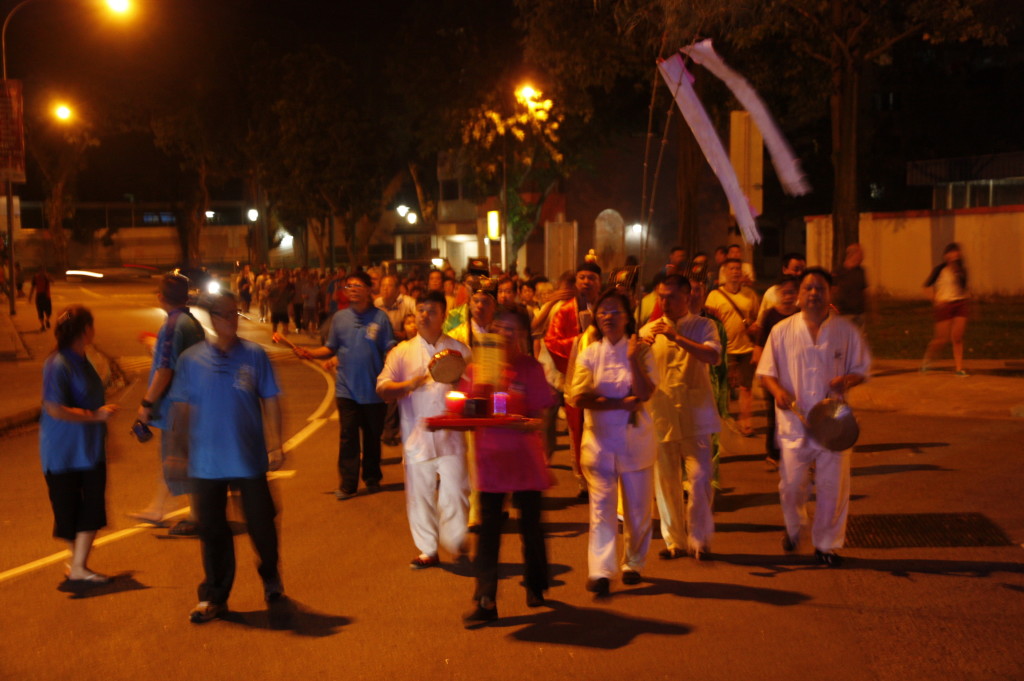
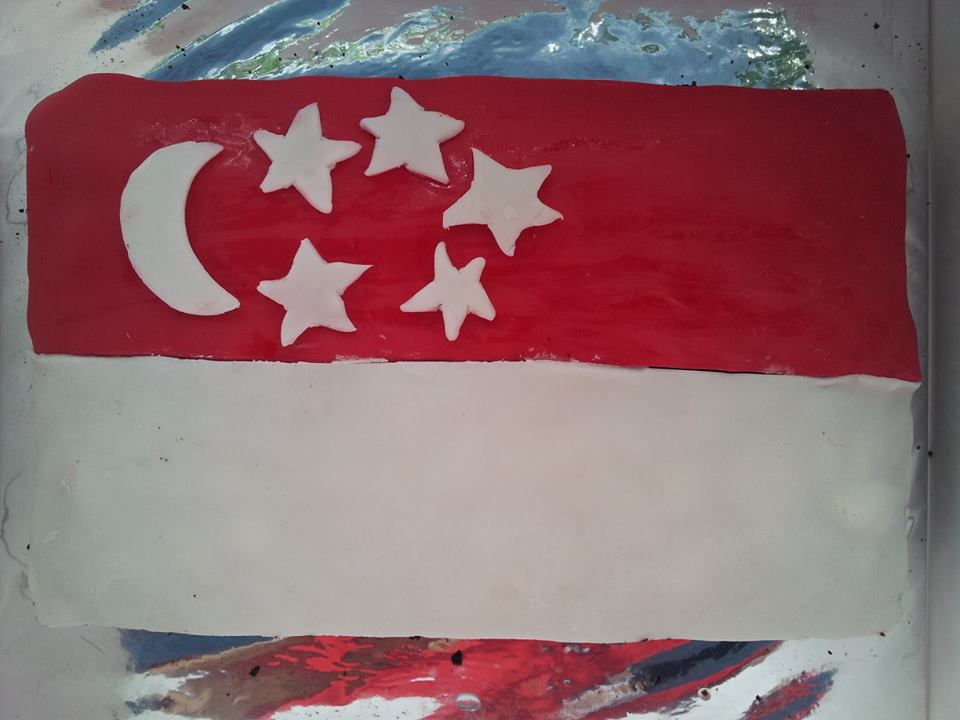
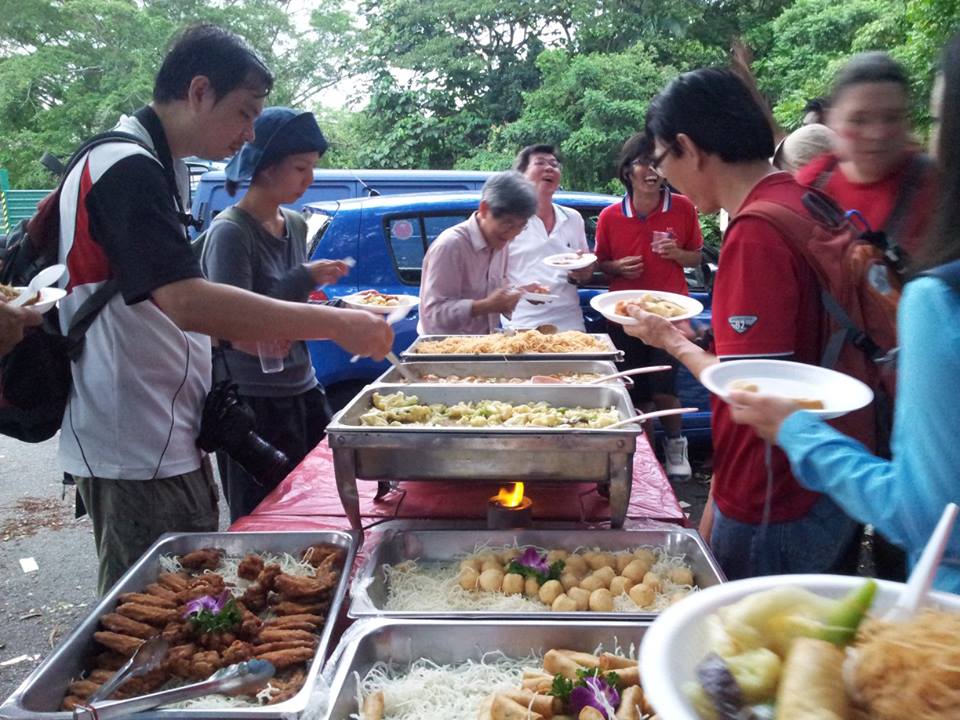


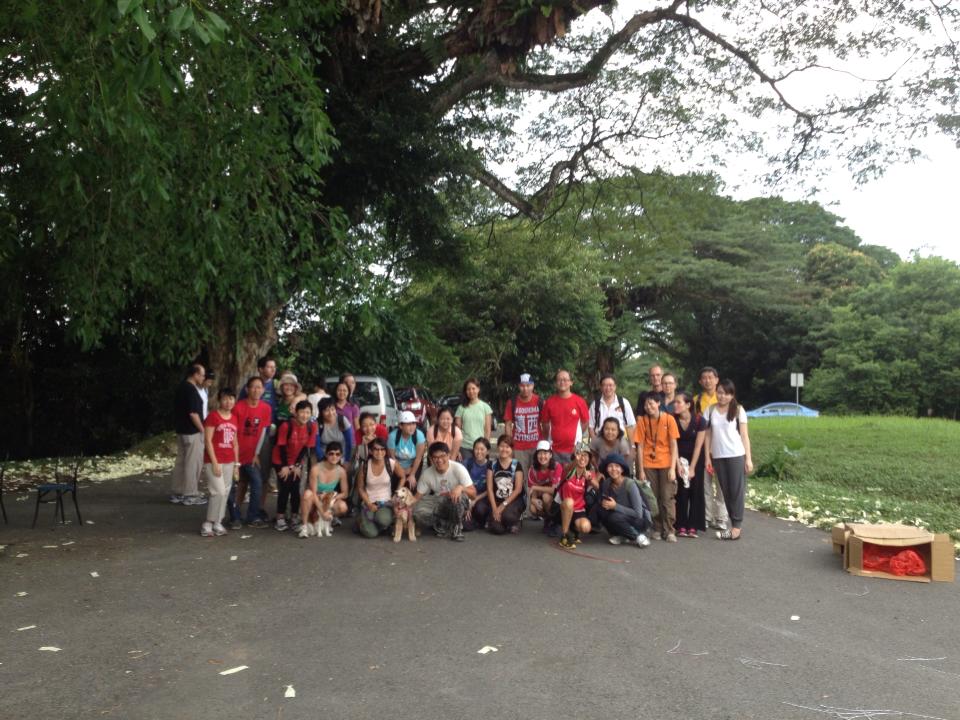


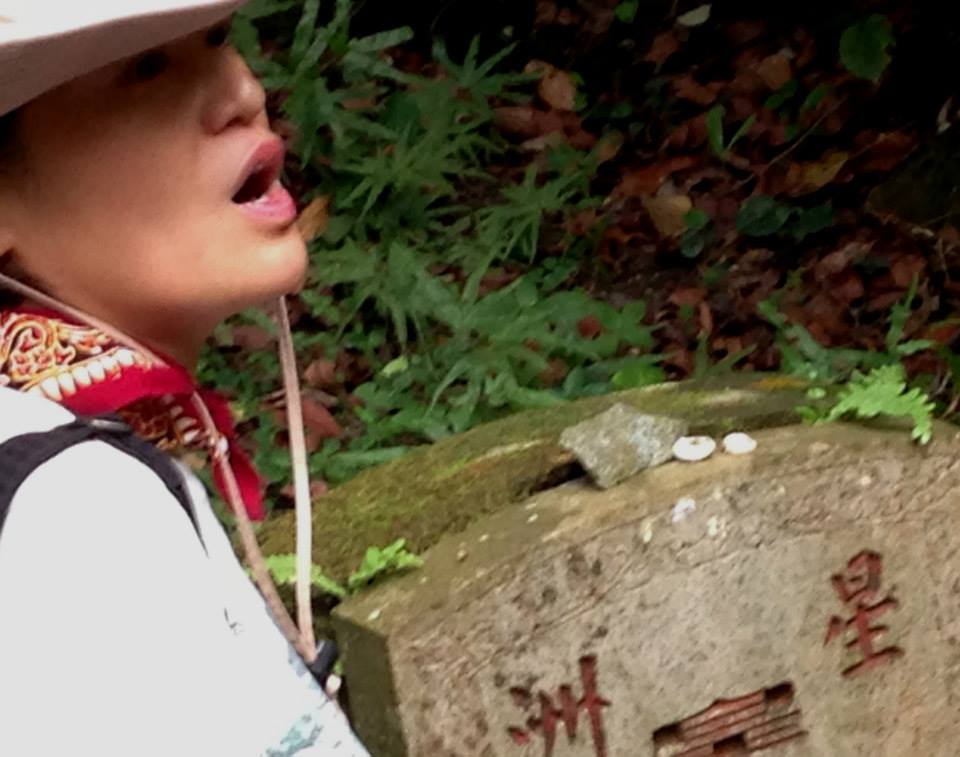

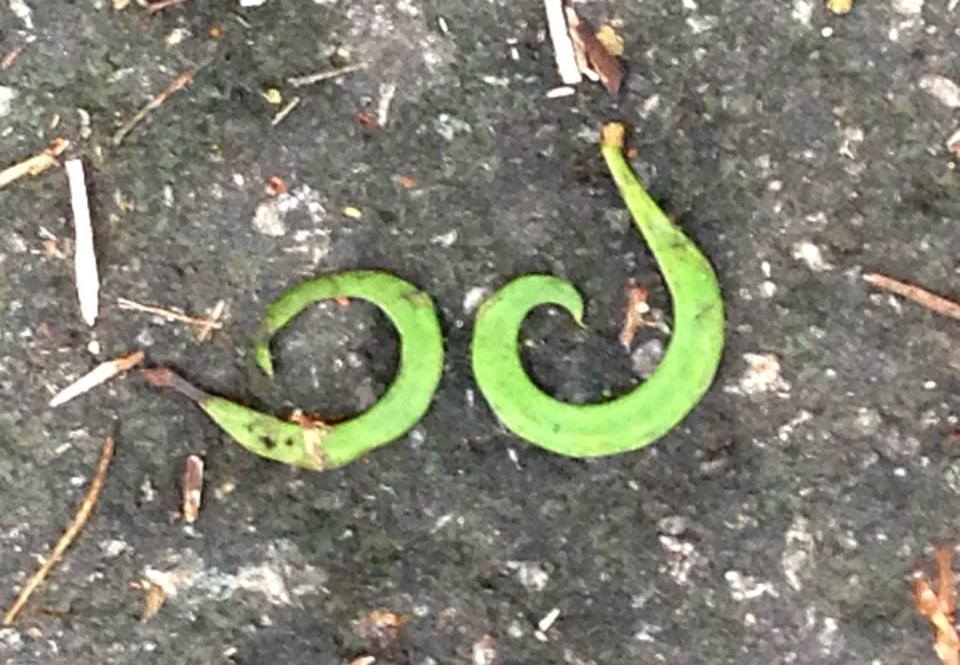
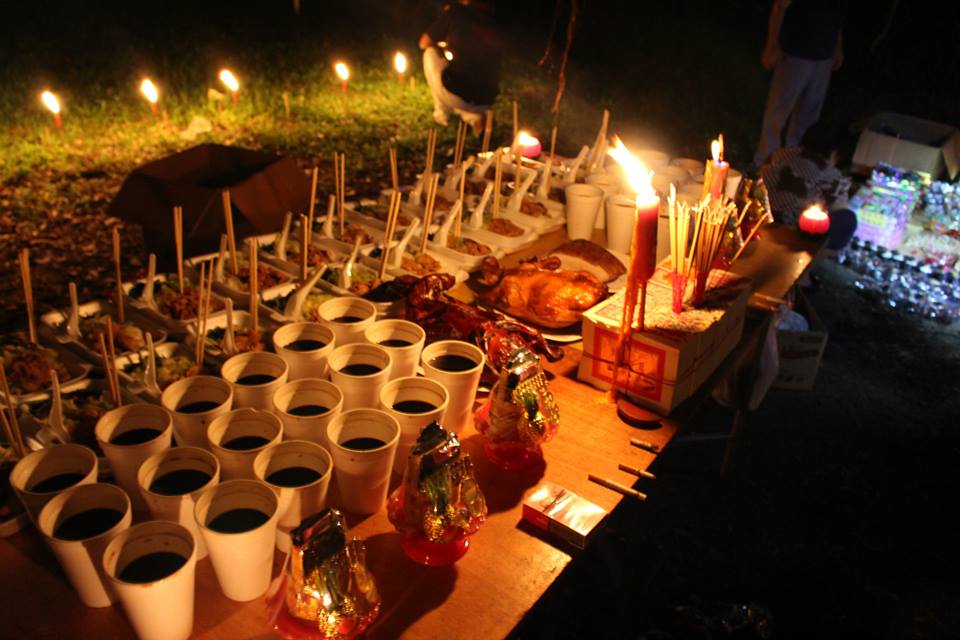
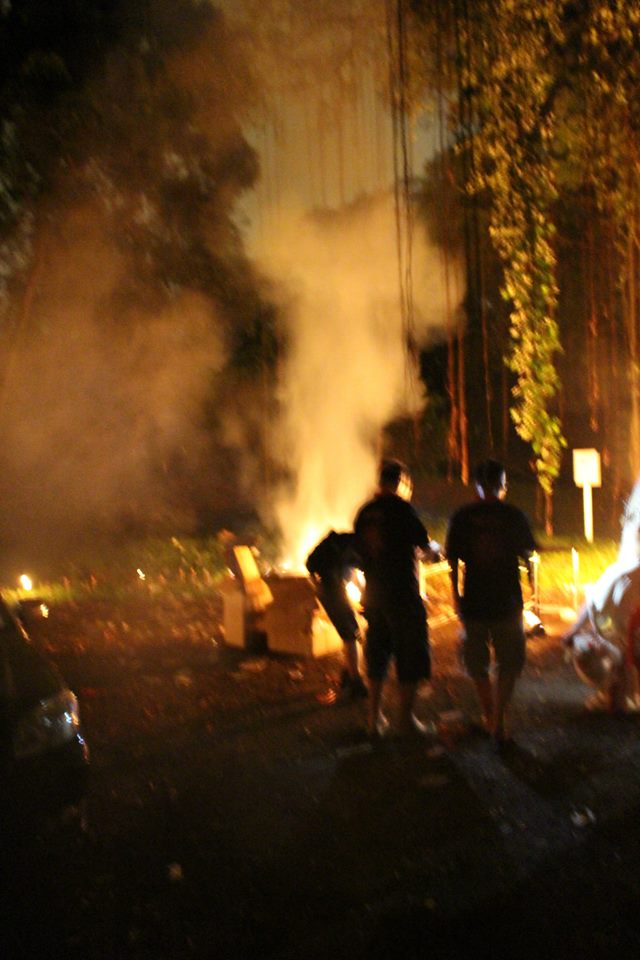
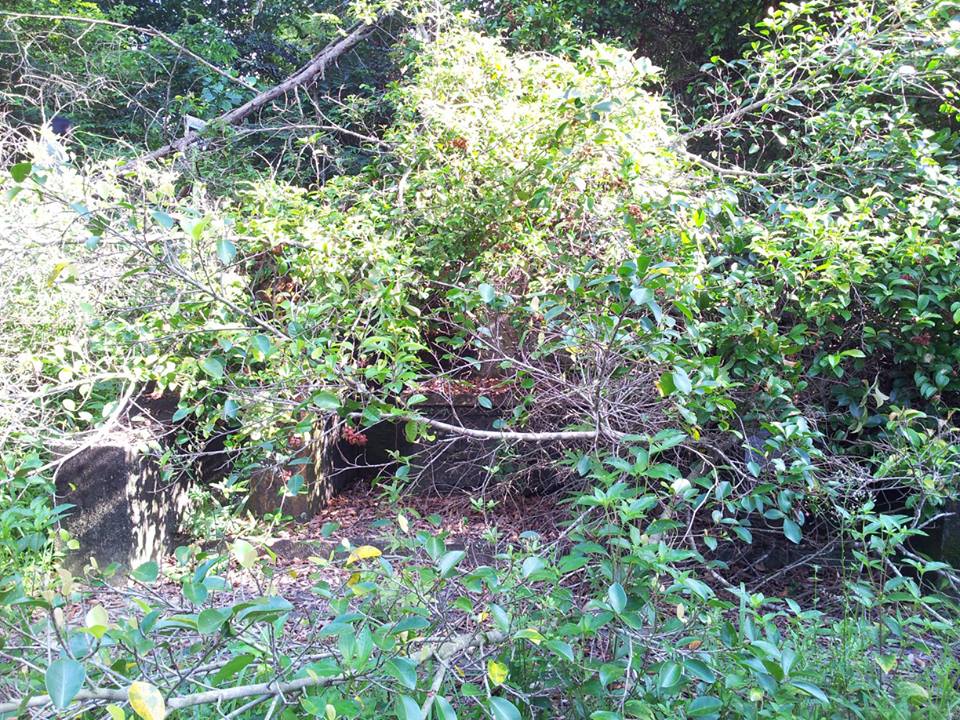
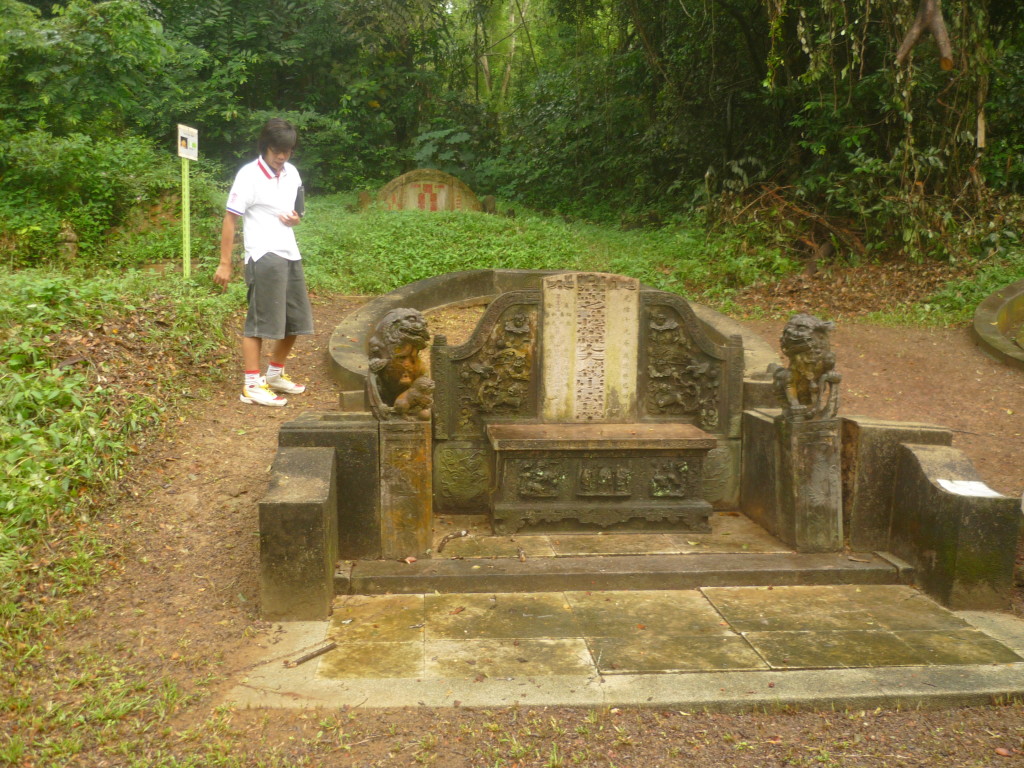

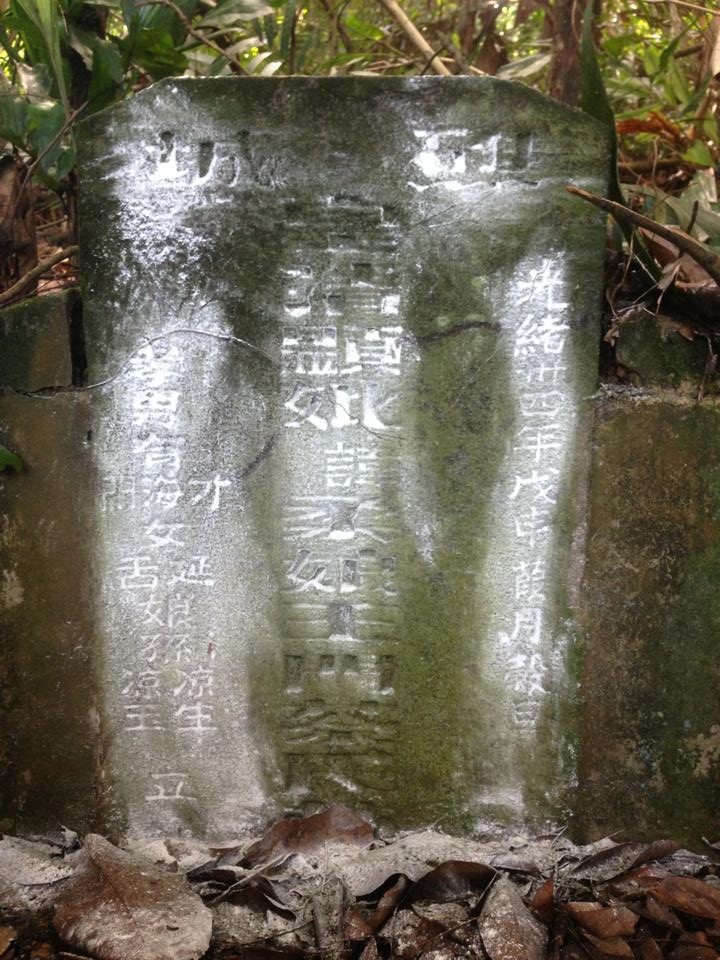
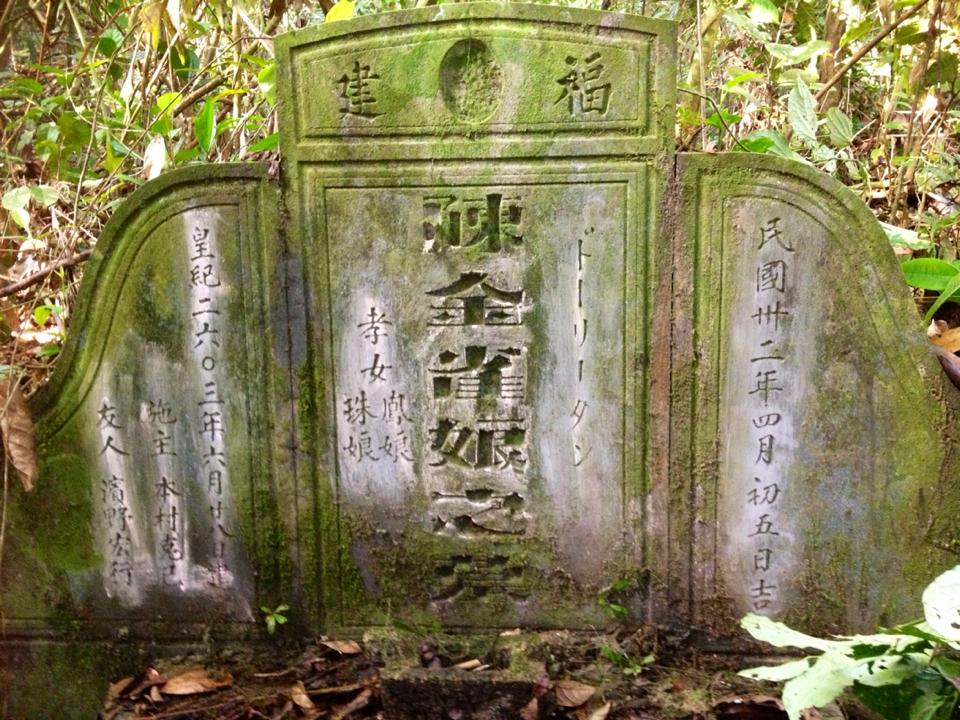
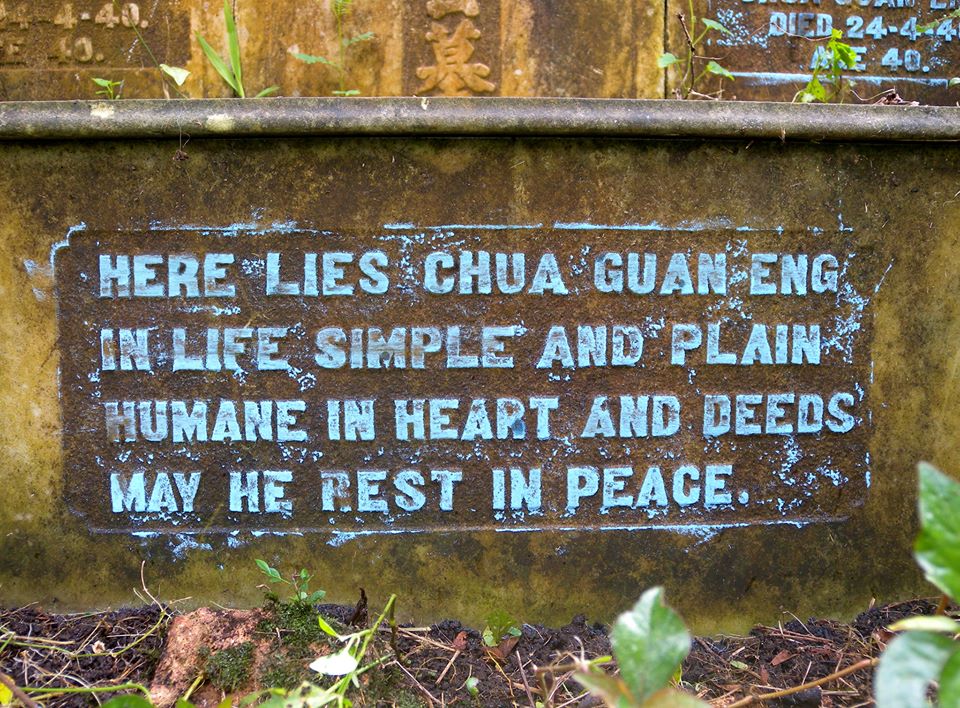
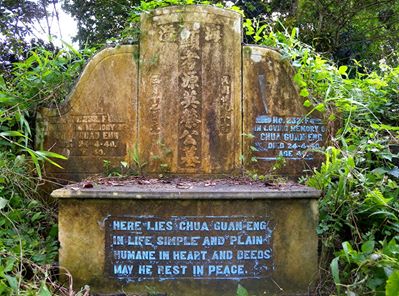
Recent Comments